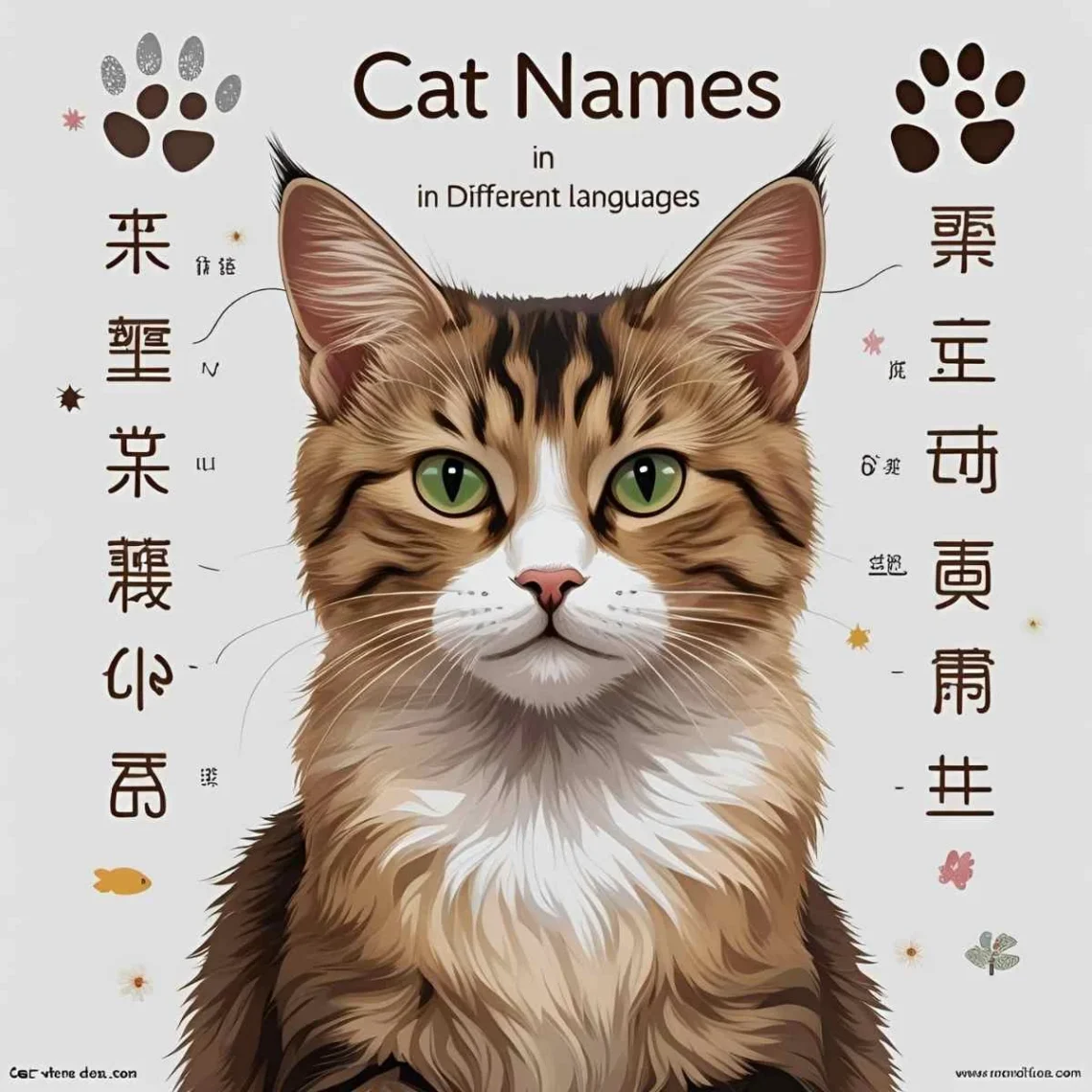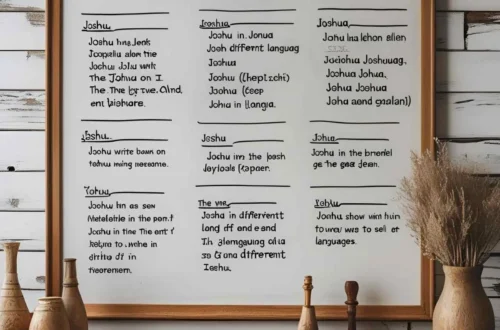Picture a cozy evening in Cairo, where a fluffy feline curls up as its owner softly calls “qutaa.” That simple word, “cat,” carries a universal affection for these mysterious creatures, yet it transforms across languages and cultures.
Whether it’s a playful “gato” in a Mexican mercado or a gentle “neko” in a Tokyo home, the term for “cat” reflects humanity’s shared love for these companions, shaped by unique cultural lenses. Let’s embark on a global journey to explore how people name “cat” in different languages and what these words reveal about their bond with felines.
Reference Table: “Cat” in Different Languages
| Language | Word/Phrase | Cultural/Linguistic Insight |
|---|---|---|
| French | Chat | Evokes a soft, elegant sound, mirroring feline grace. |
| Spanish | Gato | A lively term, often used affectionately in Latin America. |
| Italian | Gatto | Suggests a playful yet regal creature, common in Italy. |
| German | Katze | A straightforward term, reflecting Germany’s directness. |
| Mandarin | Māo (猫) | Mimics a cat’s meow, used fondly in China. |
| Hindi | Billi | A soft, endearing term, popular in Indian households. |
| Japanese | Neko (猫) | A beloved term, tied to Japan’s cat-centric culture. |
| Korean | Goyangi (고양이) | A melodic word, often used with affection in Korea. |
| Arabic | Qutaa (قط) | Means “cat,” used across 20+ countries with warmth. |
| Swahili | Paka | A common term in East Africa, tied to domestic cats. |
| Zulu | Ikati | A warm, familiar term in South Africa. |
| Yoruba | Ologbo | Reflects a cultural respect for cats in Nigeria. |
| Maori | Ngeru | Suggests a cherished companion in New Zealand. |
| Hawaiian | Popoki | A playful term, linked to Hawaii’s love for animals. |
| Cherokee | Wesa | A concise term, used fondly in Native American communities. |
European Languages: Feline Charm in Words
European languages express “cat” with terms that capture feline elegance and cultural nuance. For instance, in French, “chat” has a soft, sophisticated sound, evoking the grace of a Parisian cat lounging in a café window. Meanwhile, Spanish speakers use “gato,” a lively term often said with affection in Spain or Mexico, where cats are beloved household companions. Additionally, Italian uses “gatto,” a word that feels playful yet regal, fitting Italy’s admiration for feline charm. In German, “Katze” is direct and practical, mirroring the culture’s straightforward approach, yet it’s often paired with endearing nicknames. Thus, these terms reflect Europe’s blend of admiration and familiarity, from poetic French to pragmatic German.
Asian Languages: Cats as Cultural Icons
Asia’s linguistic diversity offers unique terms for “cat,” often tied to affection and cultural significance. For example, in Mandarin, “māo” mimics a cat’s meow, a playful term used fondly across China. In Hindi, “billi” is a soft, endearing word, common in India’s bustling homes where cats are cherished. Similarly, Japanese uses “neko,” a beloved term tied to the country’s cat-centric culture, from Hello Kitty to cat cafés in Tokyo. In Korean, “goyangi” has a melodic quality, reflecting South Korea’s warm affection for felines. Finally, Arabic’s “qutaa,” used in over 20 countries like Egypt and Saudi Arabia, carries a sense of warmth, often linked to the region’s historical reverence for cats as protectors. These terms highlight Asia’s range, from playful onomatopoeia to deep cultural ties.
African Languages: Cats in Community Life
In African languages, “cat” often reflects familiarity and utility. For instance, Swahili, spoken in over 20 countries like Kenya and Tanzania, uses “paka,” a term tied to domestic cats that roam villages and markets. In Zulu, “ikati” is a warm, familiar word in South Africa, often used for cats that guard homes from pests. Similarly, Yoruba’s “ologbo” in Nigeria conveys respect, as cats are valued for their independence and utility. These terms, spoken across diverse African settings, emphasize cats as both companions and practical allies, often celebrated in communal life.
Indigenous & Island Languages: Felines in Close-Knit Cultures
Indigenous and island languages express “cat” with simplicity and affection. For example, Maori in New Zealand uses “ngeru,” a term that suggests a cherished companion, often seen in rural homes. In Hawaiian, “popoki” is playful and warm, tied to the islands’ love for animals and the spirit of aloha. Similarly, Cherokee’s “wesa” is a concise, fond term used in Native American communities for beloved pets. In Samoan, “pusi” reflects the Pacific’s communal approach, where cats are part of family life. Across these cultures, from New Zealand to the Cherokee Nation, “cat” emphasizes companionship, often woven into traditional stories and daily life.
Cultural Insights: The Evolution of Cat Names
Words for “cat” have evolved with cultural attitudes toward felines. For instance, in ancient Egypt, “miw” (cat) was revered, linked to the goddess Bastet, influencing modern Arabic “qutaa.” In medieval Europe, “chat” and “gatto” reflected cats’ roles as pest controllers, later softened by affection. Moreover, in Japan, “neko” gained cultural weight through folklore like the “maneki-neko” (beckoning cat), symbolizing luck. In African traditions, terms like “paka” emerged from trade routes, where cats were valued for protecting goods. These words carry histories of reverence, utility, and love, shaping humanity’s bond with cats across civilizations.
Proverbs and Sayings: Wisdom of Felines
- French: “Le chat qui dort ne chasse pas.” (The sleeping cat doesn’t hunt.) – Highlights feline cunning.
- Hindi: “Billi ke sapne mein chuhe.” (In a cat’s dreams, there are mice.) – Reflects playful ambition.
- Swahili: “Paka akililia, nyumba salama.” (When the cat cries, the house is safe.) – Ties cats to protection.
- Japanese: “Neko ni koban.” (Gold coins to a cat.) – Suggests value unappreciated, like a cat’s independence.
- Yoruba: “Ologbo ti o ba gbe ni ile, ebi a pa.” (A cat that stays home prevents hunger.) – Emphasizes utility.
FAQs
Why do some words for “cat” sound similar?
Shared linguistic roots (e.g., Indo-European “chat” and “gatto”) and trade influences (e.g., Arabic “qutaa” in Swahili) create similarities.
What’s the oldest term for “cat”?
Egyptian “miw” (circa 2000 BCE) is among the earliest, tied to cats’ sacred status.
How do cultures shape the term’s use?
In practical cultures (e.g., African), “cat” emphasizes utility, while in affectionate ones (e.g., Japanese), it reflects companionship.
Conclusion
From “gato” in Mexico to “paka” in Kenya, the word for “cat” weaves a global thread of affection and admiration. Each term, whether the playful “neko” in Japanese or the warm “ngeru” in Maori, reflects cultural values while celebrating our shared love for felines. Consequently, these words remind us that cats, with their grace and mystery, unite all people in a universal bond. How do you say “cat” in your language, and what makes your feline friend special? Share your stories below—we’d love to hear your purr-fect tale!






